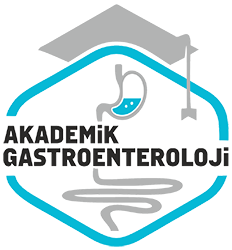Sirozlu hastalarda subklinik hepatik ensefalopati sıklığı ve klinik önemi
The frequency of and clinical importance subclinical hepatic encephalopathy in cirrhotic patients
Çukurova Üniversitesi Tip Fakültesi, Nöroloji Anabilim Dali2, Gastroenteroloji Bilim Dali3 Adana
Özet
Giriş ve amaç: Bu çalışmada sirozlu hastalarda subklinik hepatik ensefalopati sikligi arastirildi. Gereç ve yöntem: çalışma 75 sirozlu olgu ile bu olgularla benzer yaş, cinsiyet ve egitim düzeyinde olan sağlıklı 75 olguda yapildi. Subklinik hepatik ensefalopati sikligini saptamak için psikometrik testlerden Number Connection Test ile elekrofizyolojik testlerden somatosensoriel uyarilmis potansiyel, görsel uyarilmis potansiyel ve beyinsapi uyarilmis potansiyel testleri uygulandi. Ayrıca bu hastalara görüntüleme yöntemlerden elektroensefalografi ve “magnetic rezonans imaging” incelemeleri yapildi. Bulgular: Psikometrik testlerden Number Connection Test %22, elektrofizyolojik testlerden somatosensoriel uyarilmis potansiyel % 44, beyinsapi uyarilmis potansiyel % 2.7 ve görsel uyarilmis potansiyel % 2.7 olguda anormal bulgu verdi. Görüntüleme yöntemlerinden elektroensefalografi % 5.3 ve magnetic rezonans imaging % 32 olguda anormal bulundu. Bu sonuçlar asikar ensefalopati olmaksizin sirozlu Hastaların bir kisminda subklinik hepatik ensefalopatinin mevcut olduğunu ve bu olgularin kolaylikla karaciger komasina girebileceklerini düsündürmektedir. Sonuç: Kanimizca özellikle motorlu araç kullanımi, makina isletme gibi agir sorumluluk gerektiren islerde çalisan sirozlu hastalarda subklinik hepatik ensefalopatinin arastirilmasi, tedavi edilmesi ve bu olgularin daha yakindan izlenmesi gerekmektedir.
Abstract
Background and aim: In this study, the frequency of subclinical hepatic encephalopathy in cirrhotic patients was investigated. Methods: Seventy five cirrhotic patients and 75 healthy controls of the same age, sex and education level were included. In order to diagnose subclinical hepatic encephalopathy, the number connection test-A as a psychometric test, and somatosensory evoked potential, visual evoked potential and Brain-stem auditory-evoked potential as electrophsiological tests were used. Electroencephalography and magnetic resonance imaging procedures were performed on each patient. Results: Abnormal results for number connection test-A, somatosensory evoked potential, brainstem auditory-evoked potantial and visual evoked potential were 23%, 44%, 2.7% and 2.7% respectively. The frequency of abnormality as diagnosed by electroencepholography and magnetic resonance imaging were 5.3% and 32% respectively. The results indicated that subclinical hepatic encephalopathy was potentially present in some cirrhotic patients and that some of them might progress to overt hepatic coma. Conclusions: Periodic follow-up of these patients is necessary due to the negative effects that subclinical hepatic encephalopathy may have on physical tasks such as driving and manual work.



